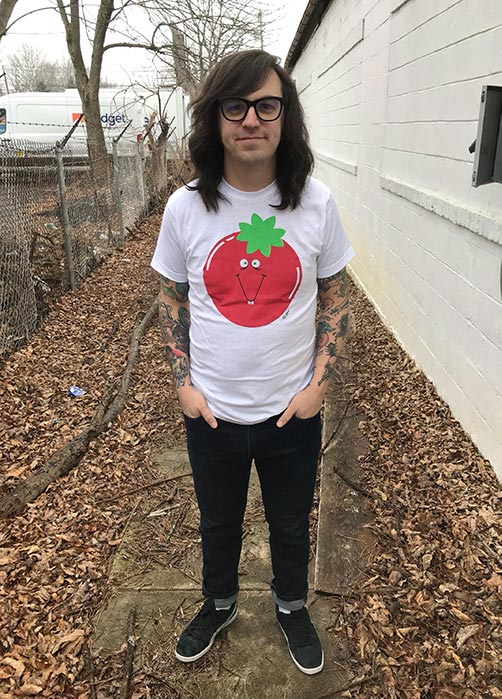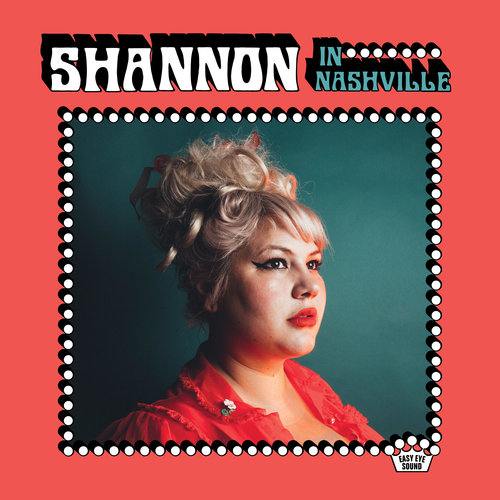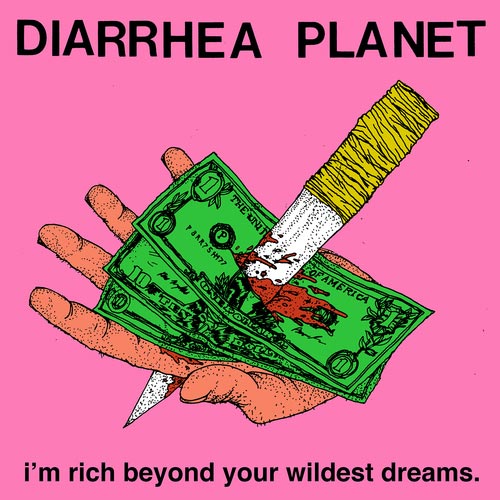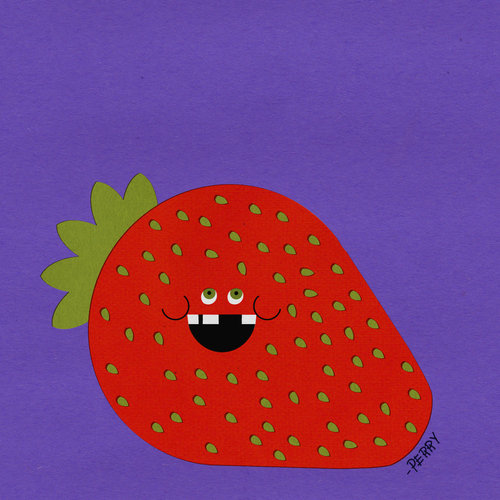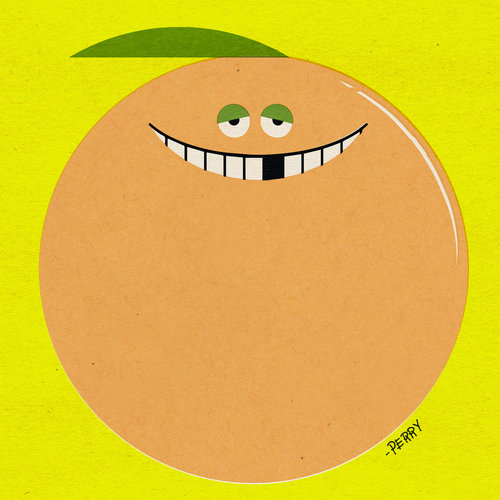It’s safe to say that Perry Shall is a T-shirt guy. There are the T-shirts he sells at his online shop, which sport the illustrator and graphic designer’s custom prints. Then there’s his personal collection, a whopping assemblage that now numbers in excess of 1,500. But the shirts aren’t just something to own, they also inform him as an artist—the graphic directness, the stylistic timelessness, the determined focus of the collector mentality.
Perry is multi-hyphenate artist, recording with his bands Hound and Wild Flowers of America and directing music videos for indie notables like Waxahatchee, but he’s best known—and best paid—for his poster and album cover art and design, perhaps most notably with ongoing work for Dan Auerbach of The Black Keys. We recently caught up with Perry to talk about why he prefers classic over retro, how his hometown of Philadelphia has helped make him the artist he is, and (literally) dreaming about T-shirts.
How long have you been doing art? How did you first get involved with graphic design and illustration?
I’ve been drawing since I was a kid obviously. I remember all the way back to first grade, I just started to notice I was more interested in art than anything. We had an art class the first day of school. They sat us down and there were a bunch of drawings of clowns everywhere. And I was so excited about it. I sat down and just started drawing this clown, and the teacher got really mad at me. “I haven’t told you to start drawing yet. I haven’t given you any instruction.” I remember I was just ready; all I wanted to do was draw, like all the other classes were just building up to that class.
Any time I was in school, all my notebooks were filled with drawings and barely any notes at all. I wasn’t a good student as far as grades, but all the teachers liked me because I wasn’t a bad kid. In middle school I was able to embrace it. There was a gifted program that I didn’t get into, but my friend insisted we try to get me in just for art, and that’s what happened. I tried going to art school for college and I dropped out. I was already making art for my own bands and friends’ bands when I was 20 or younger. You do a T-shirt for your band, then your friends are like, “Can you do one for us?” Then you end up doing artwork for a CD or 7-inch or whatever. It just built up from there.
I did heating and AC for years and I thought, if I keep doing this I’ll make some extra money on the side doing art. But I never really thought I could actually do art full-time; it didn’t seem like a reality to me for a long time. Then I started getting bigger and bigger jobs and working [HVAC] less and less. It turned into a full-time thing around 2014 or 2015 … But I worked in my bedroom until about two years ago.
What source of revenue brings in the most income: album art, T-shirts, music? Do you have to supplement or can you live full-time off creative work?
I don’t make any money being in a band. (Laughs) Some of my best friends and my roommate, that is their full-time job, and the people I work for. For a long time I think I wished [music] could be it. But with art, you see it everywhere. You don’t see bands everywhere. But I can go to a show and see people wearing the shirt I made or selling the poster or album I designed. I’ve done a billboard or two. So there’s all these things that make you think, OK, I made the right decision. I guess I would say album art is the biggest thing.
“Not that retro is an inherently bad word, but the word I use is ‘timeless.’ I try to make things that look classic or timeless.”
What’s Hound up to these days?
We haven’t done anything since July. The bassist helps run an amazing produce store in the Fishtown area of Philly. He’s second in charge, so he’s busy all the time, and he plays in another band, Purling Hiss. Chris, our drummer, plays with Ted Leo, Titus Andronicus, and about a million other bands right now—so he’s busy touring. But now we have a couple shows lined up and are starting to practice. And I’ve got another band going.
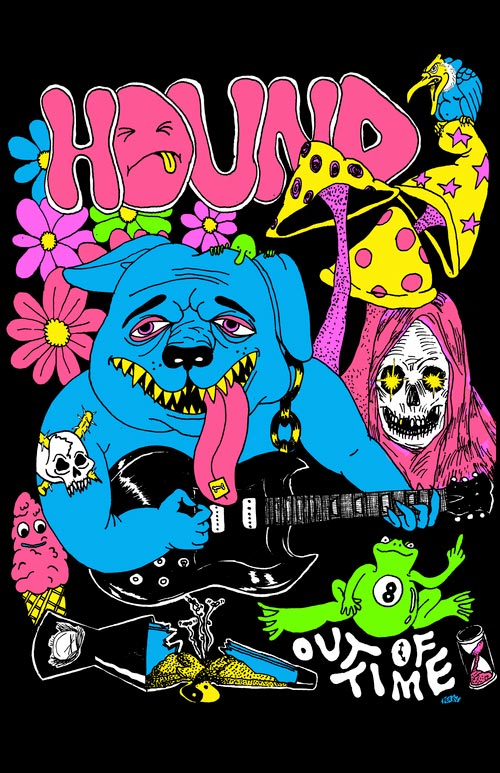
Perry’s poster design for his own band, Hound.
What’s that one?
That one’s called Wild Flowers of America. The short version is, in 2014, I wrote a bunch of songs and got some friends to play them. We played about two shows, then last year I finally decided, I like those songs, I should record them. I went to a studio in Wisconsin and brought nothing except the songs in my head. So my friends and I recorded the 10-song album and that’ll be out this year.
Your album art is a mix of retro and collage style, with some deliberately amateurish hard lines in the photo editing. How did you settle on your aesthetic?
I guess a lot of people know me as a designer, which I still forget that I should say that I’m a designer. Because I basically started as an illustrator who needed to put art into templates, or put a band’s name over the art, or figure out ways to make it look presentable other than just, “Here’s a drawing.” Then at a certain point people started telling me, “Oh, you’re really good at doing design.” I’m probably better at design than illustration, but it all kind of works together.
I figured out the way to explain this is, I’m a collector. You probably know, I have at this point some 1,600 T-shirts. I’ve been collecting them since about 12, plus toys and art and records since I was a kid. I got my dad to take me to flea markets and thrift stores when I was young. I think the thing that really ties it together is, I don’t want to make something I don’t want to own. I work so I can go to thrift stores and estate sales and find unique stuff that I’ve never seen before, and all my artwork comes out of that.
And I don’t think of it as retro. I really dislike using that word to describe my art. I try to do a lot of styles that were used when a lot of those things I collect were first being made. Not that “retro” is an inherently bad word, but the word I use is “timeless.” I try to make things that look classic or timeless. So if you saw it in a store you’d think, “Oh, I wonder when this was made,” or wonder how it was made. I want it to be appealing and familiar in way that people don’t think of as retro.
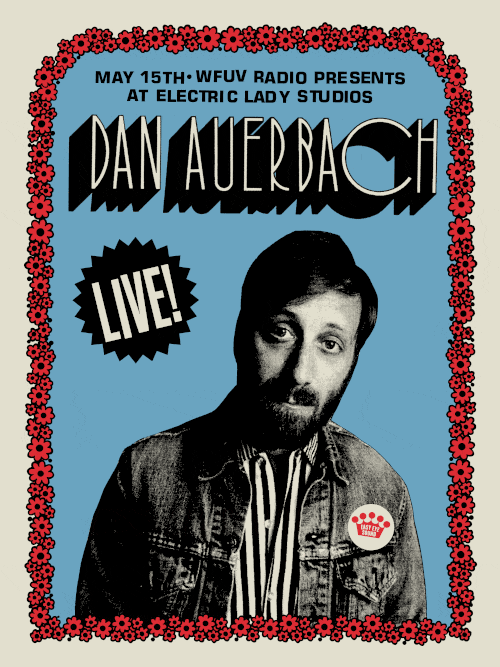
Perry has designed posters, album covers, and T-shirts for Dan Auerbach.
Like when you go to Target and they have those distressed T-shirts, that’s what I think of as retro, like trying to emulate something instead of creating something unique that feels timeless.
You mentioned the T-shirts. Is there a specific era or graphic style to which you gravitate? Or is it mostly about the hunt?
The whole thing for me is the hunt. I mean, it’s about the shirt, too, but if I wake up at 5am and drive an hour away to wait in line for an hour to get into some old house filled with stuff that might or might not be there, that’s thrilling to me, to not know the exact outcome. I’m usually looking for shirts 25 years old or older—’70s and ‘80s stuff that I’ve been influenced by since I was a kid watching old cartoons and TV shows. So mostly the older the better. But what’s the meaning behind it? What was the meaning for people who owned it before me? I believe there’s more to a T-shirt than just wearing it.
You have your own T-shirts for sale, too, of course. Do you imagine second or third lives for those?
I have so many thoughts about it. I have dreams about T-shirts. I just find it so interesting and underrated as far as being as important as art. It’s really like a walking advertisement for you. That’s important—a way of communicating without even talking. Or even just knowing somebody else cares about a thing you care about. There’s something weirdly comforting with all that.
Tell me about the little fruit guy designs. Why are those among your favorites?
It kind of started as an exercise. I was home and I was like, I need to make something right now. But not being at my studio, I didn’t have pens or a scanner. So I thought I’d see if I could do a mindless exercise on my computer with a movie on. And I was looking through a lot of Ed Emberley books at that time—I guess I still am. His books are really great if you don’t know what to draw, so I’ll start with this thing. I was just going through those in my head. I think the first one I did was an orange. I was just in Photoshop making shapes. I don’t know how to use Illustrator at all. I never have. I’ve always used Photoshop or done everything by hand. It was kind of like, what can I make out of nothing?
Is that something you find yourself doing often, tinkering on projects during idle time?
I wish it was more often that it is. I haven’t had an art show in maybe like two years, and the best part about having an art show is you can make a bunch of original art. It kind of forces you, I need to have 20 pieces to hang up. I wish I were able to do it more but because I do commissioned-based work, I’m so busy with that most of the time. If I’m just sitting around on a computer I’ll think of something to be working on, maybe this’ll be a new T-shirt or maybe I’ll pitch this to a band. So I’m definitely always thinking creatively.
The Philly creative community seems super tight-knit. Do you think you’d be the same artist if you weren’t from and didn’t live in Philly?
I definitely don’t think I’d be the same if I didn’t live here. I was born and raised here, and I never wanted to leave. I don’t know what it would take to get me to leave; I don’t think there’s anything really. I do feel motivated living here. Philly gets a bad rap for being full of assholes. But in the heart of it, it’s a very hard-working city. People here are just trying to make a living, just trying to live. It can be a rough place, it can be a dangerous place, and it can be a completely gentrified place with a bunch of rich people, too. But there’s something about it that’s always made me feel like I need to keep creating stuff. It’s cliche to say it’s an underdog city. It’s always in competition with New York or other big cities full of artists. But in Philly I’m doing everything I want to do successfully, and I rent out a crappy little room in a warehouse. There’s something gross about it, but I feel like that helps fuel my work.
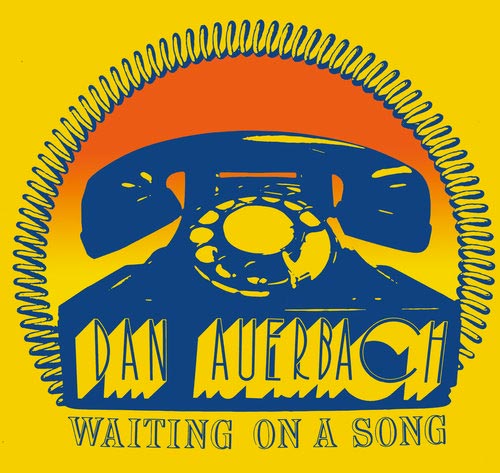
I know you’re a fan of [comedy podcaster] Tom Scharpling. He recently called Philly “Boston for weirdos.”
I agree with that in a lot of ways … Tom’s pretty on point with Philly. But, yeah, Philly’s a really weird place; it’s super weird. There’s all this historical stuff, so many old buildings, so many weird people who’ve been here their whole lives and might never leave their neighborhood. I like parts of Philly that a lot of people don’t really go to or don’t know exist, but I know them because I’m from here.
You’ve directed music videos for bands like PUJOL, Waxahatchee, and Tweens. They all have a fun, friends-hanging-out vibe and they use some wonderfully outdated technology. I won’t say retro! But do you feel nostalgic for those old techniques?
It’s funny. A lot of people don’t know I’ve done music videos. I’m glad you know that. (Laughs) I love doing music videos, directing, coming up with concepts. I have lists of music video ideas in my phone; there’s just not enough time to do all of them. When I was a kid, my parents had a camcorder, and there are old videos of me interviewing my sister and stuff. When you’re a kid and you have a camcorder, you feel like you are making a movie or music video. There’s a lot of power behind being able to do that.
In 10th grade I met my friend Eddie Austin, who I’ve done most of my videos with. He was already just making movies all the time, and eventually I started doing it, too. It was always on VHS because you find them at a flea market or thrift store, and they’re cheap and they look cool, and you can take the tape right out of the camera and put it into the VCR. It was very hands-on and easy to work with, when digital was still early-ish. It was more realistic to make stuff on that. What I’ve always liked about that, and even audio cassette tapes, there’s actual tape that you’re recording onto. There’s a physical thing that exists. And of course it looks cool, that style, but whatever. The whole thing with the videos and all my artwork, I want it to feel like, when did this come from? Is it old? Is it new? It feels very familiar. It brings nostalgia to a lot of people, too. And who wouldn’t want to create something that makes someone feel nostalgic? That’s pretty powerful stuff.
